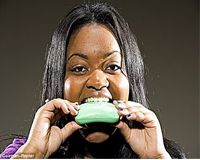
Gnawing or sucking on objects releases endorphins and serves as comfort.ĭistress can exacerbate pre-existing pica and chomping of things is also used as a coping mechanism.

Obsessive-Compulsive DisorderĪccording to certain literature pica may be considered an obsessive-compulsive disorder in anxious moggies. High reinforcement history to things can have an accentuating component, increasing the likelihood of the behaviour repeated, inadvertently reinforced by the owner when the cat steals food items with plastic wrapping. Potential contributing factors include boredom, anxiety, frustration and lack of social contact. Pica prevalence is considerably greater in felines housed exclusively indoor. Infrequently, eating inappropriate things may also happen with medical issues like fatty liver disease.Īdditionally, neurological disorders and cancer (i.e., brain tumours) can disrupt appetite control and contribute to uncommon cravings resulting in pica. Two studies uncovered a high prevalence of pica diagnosed in cats with immune-mediated Hemolytic Anemia, Pyruvate kinase deficiencies, and Feline Infectious Peritonitis (FIP), but with lower occurrences (Isabelle Demontigny-Bédard, 2015). Licking or absorption of weird substances has been correlated to Endocrine and Gastrointestinal conditions such as Hyperthyroidism, Diabetes, Inflammatory Bowel Disease (IBD), Gastric Motility, and hookworm infestation. Dietary DeficienciesĬats with prolonged nutritional deficiencies lacking adequate fat, minerals and/or vitamins in their food may ingest non-edible material, whilst other cases could also be due to dietary imbalance from lack of roughage, although a clear dietary insufficiency has yet to be documented. Other domestic kitties with no known Oriental ancestry like DSH and Ragdolls may also endure pica. Pica is generally seen in breeds like Siamese, Tonkinese, and Burmese who are predisposed to eating wool or wool sucking. Since there’s no test to diagnose pica, veterinary professionals depend on owner’s home observations and note-taking. Why Do Cats Have Pica? Hypothesized Causes Of Pica ExplainedĬats know that meowing will get you to look at them, and making crinkling sounds can accomplish the same goal. Ingestion of bizarre objects can result in life-threatening internal blockages requiring urgent veterinary medical attention. Likewise, many young moggies will chew and tear at objects when exhibiting predatory behaviour during play, pieces are torn off but NOT consumed. When adult moggies exhibit suckling behaviours, material isn’t consumed, simply sucked repetitively and often accompanied with front paw kneading. Pica shouldn’t be mistaken for kitten behaviour of suckling which might persist into adulthood. Often the molar teeth are used to chew holes in such materials. Frequently reported items which cats may chew include wool, fabric, wood, plastic, paper and plants (Case, 2003, Horwitz & Mills 2009). Pica involves ingestion of non-food items.
#19th century case of pica eating disorder free
read more from eating dirt.Home Remedies: Keeping the litter box free of feces daily, removing any tempting objects (plastic, string, etc.) from the home environment to where a cat cannot reach them.

read more from eating paint chips, or a parasitic infection Overview of Parasitic Infections A parasite is an organism that lives on or inside another organism (the host) and benefits (for example, by getting nutrients) from the host at the host's expense.

Children are particularly susceptible because their nervous system is still developing. read more, lead poisoning Lead Poisoning Lead poisoning affects many parts of the body, including the brain, nerves, kidneys, liver, and blood.

read more, blockages in the digestive tract Intestinal Obstruction An obstruction of the intestine is a blockage that completely stops or seriously impairs the passage of food, fluid, digestive secretions, and gas through the intestines. However, sometimes what they eat causes complications, such as constipation Constipation in Adults Constipation is difficult or infrequent bowel movements, hard stool, or a feeling that the rectum is not totally empty after a bowel movement (incomplete evacuation). Usually, what people with pica eat does not harm them.


 0 kommentar(er)
0 kommentar(er)
